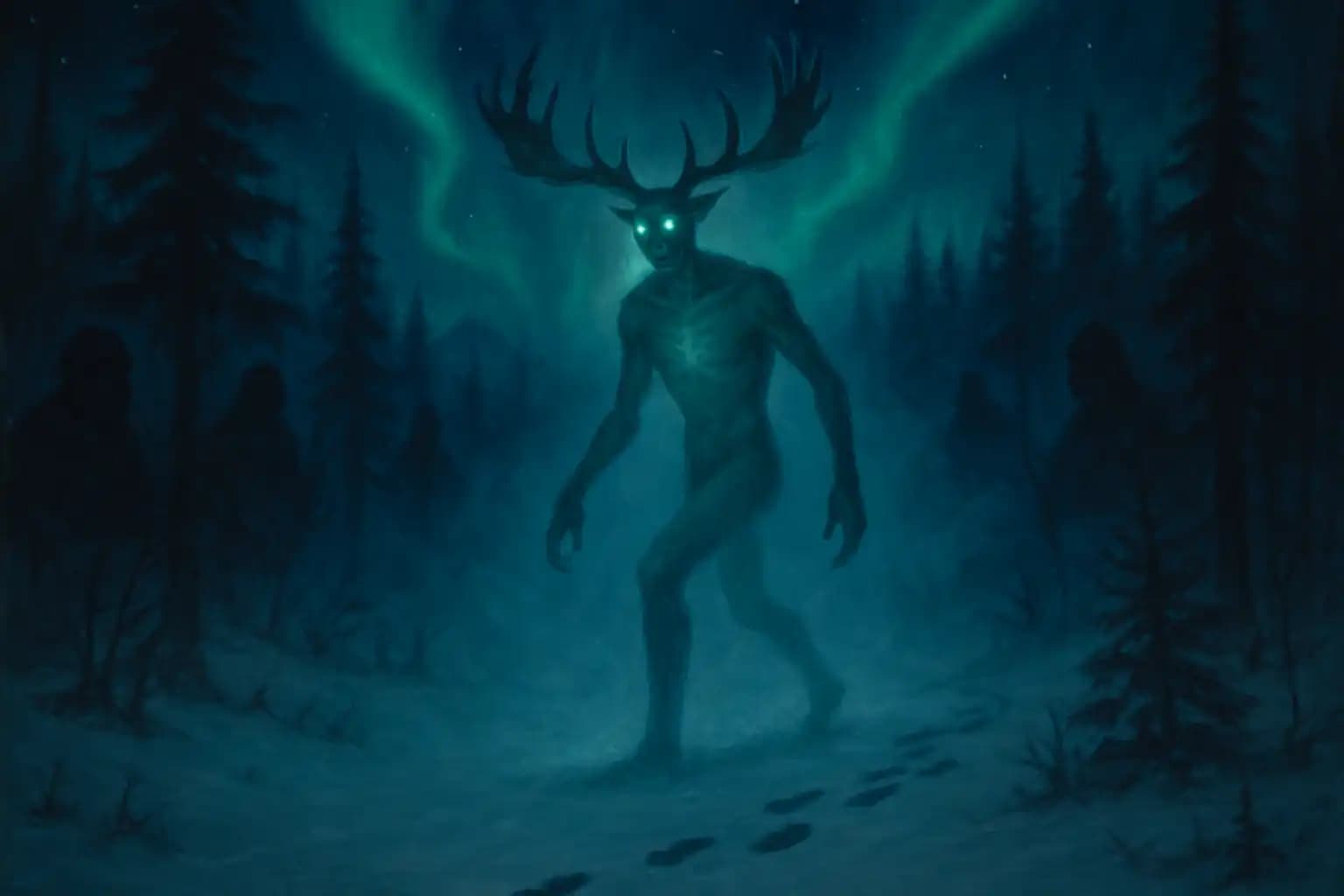A unique cold seeps into your bones while trekking the wilds of Labrador. For years, another chill has haunted the region—one unrelated to temperature. The Caribou Man—part man, part caribou, an enigmatic spirit or cryptid—still echoes through the spruce forests. For many, he represents Canada’s most perplexing and spine-chilling cryptid, intertwining indigenous mythology, modern encounters, and a healthy dose of paranoia. If you seek tales that make Sasquatch seem ordinary, strap on your snow boots and explore Labrador’s oldest supernatural mystery.
Accounts of the Caribou Man, also called Kanipinikassikueu or the Caribou Master, trace back to the oral traditions of the Innu people. According to firsthand documentation and retellings by local Innu elders, the Caribou Man represents more than just a beast; he embodies a master spirit, guardian, and sometimes enforcer, regulating not only herds but also the relationship between people and nature. In the Innu perspective, his presence serves as a warning, a teacher, and in unsettling stories, a hunter of hunters.
Roots in Indigenous Mythology: Animal Masters and the Caribou Man
The vast Labrador landscape forms an integral backdrop to the legend. In the tapestry of unexplained Canadian creatures (see this modern Canadian roundup), the Caribou Man uniquely anchors himself in the Innu concept of Animal Masters—supernatural entities responsible for managing animal populations and balancing hunting, as noted in studies of cryptids worldwide. In Labrador, the animal master often takes on human form, living among caribou while wielding strange powers over life, migration, and even weather.
This isn’t merely Bigfoot reimagined as folklore. Projects like Atiku Napeu showcase how the line blurs between narrative and testimony. The Innu sacred practice of honoring the caribou master during the mukushan feast is vital for ensuring good hunting and survival—overlooking it invites danger. Locals frequently use this lore like prophecies, warnings, and cautionary tales do in times of disaster, reflecting similar patterns noted in global risk analyses during historic collapses.
Sightings and Testimonies: Eyewitness or Nightmare?
Long before cryptozoology took over blogs, stories of the Caribou Man thrived in campfire tales and snowy trails. Details shift with each storyteller: a man with antlers, a half-caribou figure stumbling through the brush, or a shapeshifter darting between reality and dreams. Modern cryptozoologists and Canadian mystery hunters link Labrador’s Caribou Man to other northern anomalies (check this encyclopedia entry), but what distinguishes him is the persistence of eyewitness accounts. As recently as the 21st century, hunters, trappers, and government wildlife spotters have shared stories of encountering something they couldn’t explain.
These narratives often emerge alongside anxieties over “final warnings”—whether the land communicates a message, or the mind invents monsters under stress. This blend of fear and possibility resonates with the examination of urgent disaster omens discussed in analyses of critical global tipping points. Humans remain finely attuned to the strange and concerning, even as science offers no explanations.
Folklore, Fear, and the Science of Cryptids
Cryptozoology, despite its dramatic depictions in media, remains a contentious and criticized area of study—as noted in Wikipedia’s entry. Many biologists argue that no physical evidence supports the reality of the Caribou Man and that most sightings stem from misidentifications or myth’s lingering influence. Nevertheless, governmental and academic bodies continue to catalog unexplained phenomena in the north, careful not to dismiss indigenous wisdom.
Innu narratives portray the Caribou Man as neither solely good nor entirely evil. Occasionally, cryptid hunters draw parallels between the cycle of sightings and psychological impacts tied to modern risks—be it technological (like the AI disruptions described in predictions of total automation) or sociological, as cultures struggle with uncertainty. Ultimately, Labrador’s cryptid underscores folklore’s durability as an early warning system—not easily supplanted in the age of satellites.
Cultural Survival and the Lasting Enigma
Unlike many sensationalized ‘monsters,’ the Caribou Man endures. Efforts to explain him away often strengthen the original legends: the region remains expansive, wild, and ripe for secrets. As global crises arise (see historical parallels in societal collapse or modern geophysical alarms), these stories retain their sharpness: a blend of myth-making, community bonding, and a visceral response to nature’s might.
For those captivated by mysteries at the wild’s edge, make Unexplained.co your digital base camp—because if there’s one place you want a heads-up on the world’s next big secret, it’s there.





